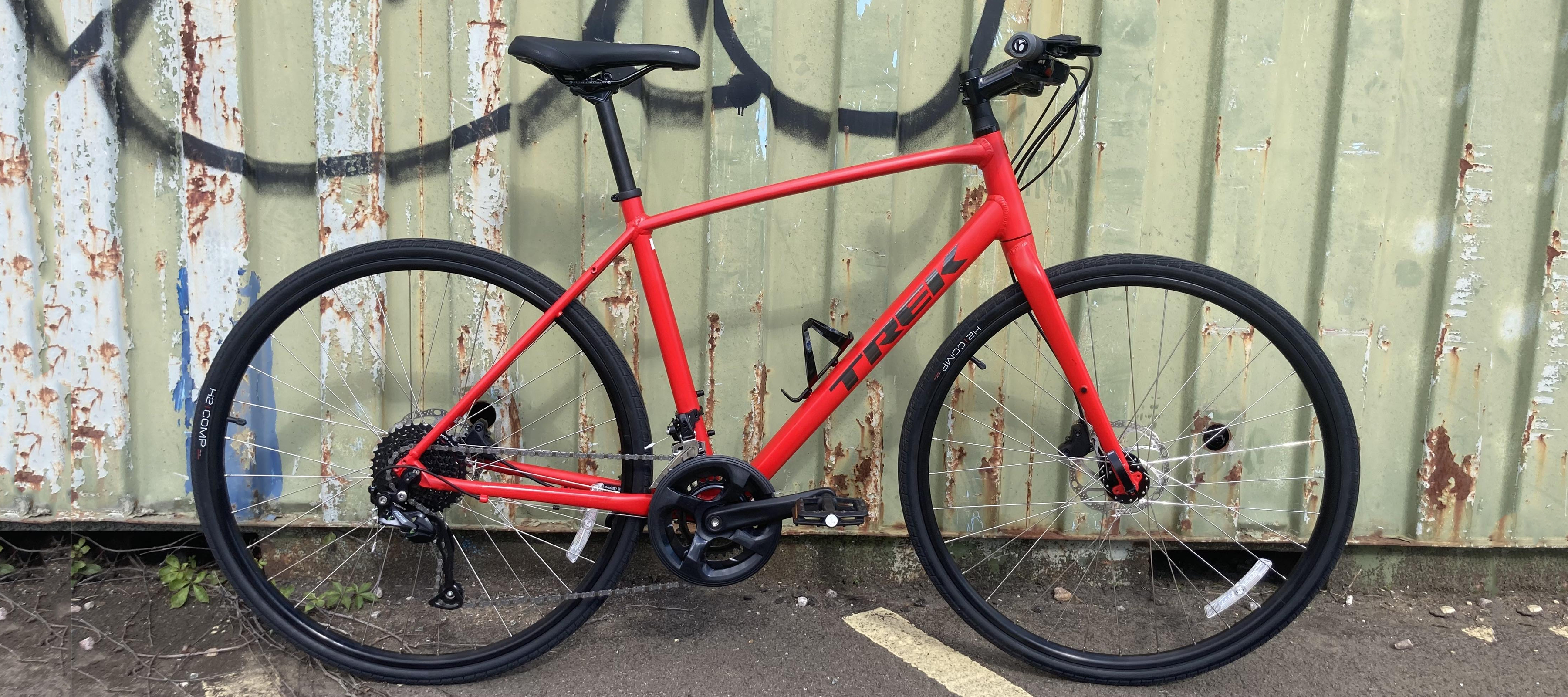Cyclingnews Verdict
Built around a frame with a superb balance between responsiveness and comfort, the Trek FX 2 Disc Equipped will tackle any task required of a hybrid bike in an effective, if unspectacular, manner
Pros
- +
The frame has a great balance between responsiveness and comfort
- +
Equipped for night riding, bikepacking or commuting
- +
Can carry a decent amount of weight
- +
Stable ride for long distances
Cons
- -
Would need a drivetrain upgrade to become a serious fitness bike
- -
On the heavy side for a rigid frame
You can trust Cyclingnews
A hybrid bike can and will mean different things to different people. But sometimes it is simply the bike that fills the gaps, that doesn't do any one thing but in fact does it all. Purists may scoff and say to compromise is to ruin the essence of life: if you are not something, you are nothing. But Trek has offered a repost: if you can't be something, be everything.
That certainly appears to be the aim of the Trek FX 2 Disc Equipped. It's the jack-of-all-trades, odd-jobber of a bike. It comes, as the name suggests, fully loaded with a pannier rack, lights, mudguards and even a kickstand but what elevates it to a place among the best budget hybrid bikes available today is that, as part of Trek's fitness range, all that versatility does not come at the cost of all rideability.
And that's a crucial element. Just because a bike has more practical functions – going to the shops, commuting, family bike rides etc – doesn't mean it can't be fun, have its own personality and leave us looking forward to running that next errand.
Trek's FX range of bikes is quite extensive, starting at the £500.00/$599.99 FX 1 and going all the way to the full-carbon £3,050.00/$2,799.99 FX Sport 6. The FX 2 is available with a step-through frame – in both the Equipped and standard versions – and has been updated for 2023, with the main difference from the 2021 model being a move from a 3x8 to a 2x9 gearing system.
The FX 2 Disc Equipped is priced at £740.00 - it's not currently available in the USA - which is £90 more than the FX 2 Disc standard (£650.00/$799.99) which foregoes the rack, lights, mudguards and kickstand. Although it does come in a couple of extra colour options.
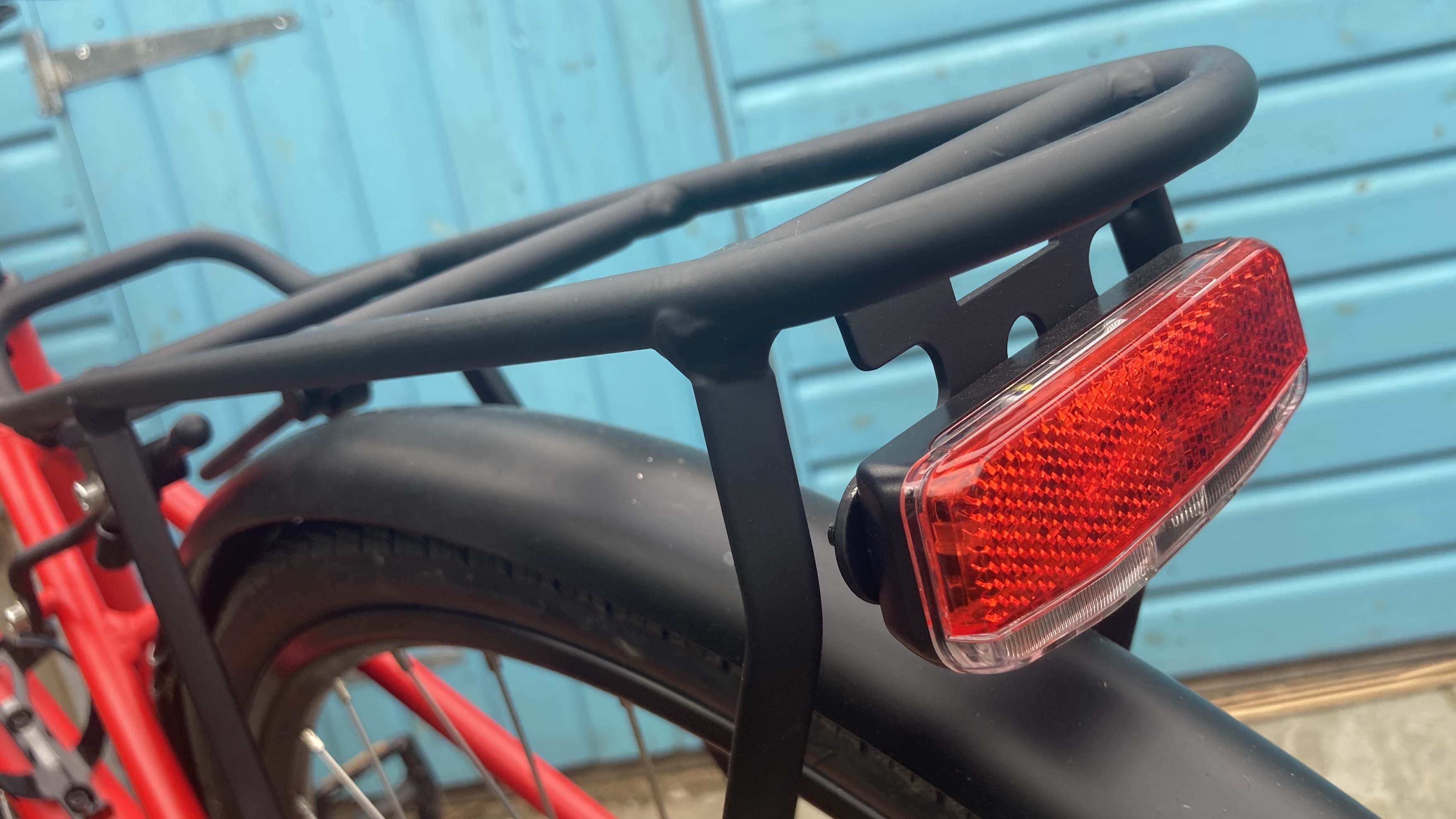
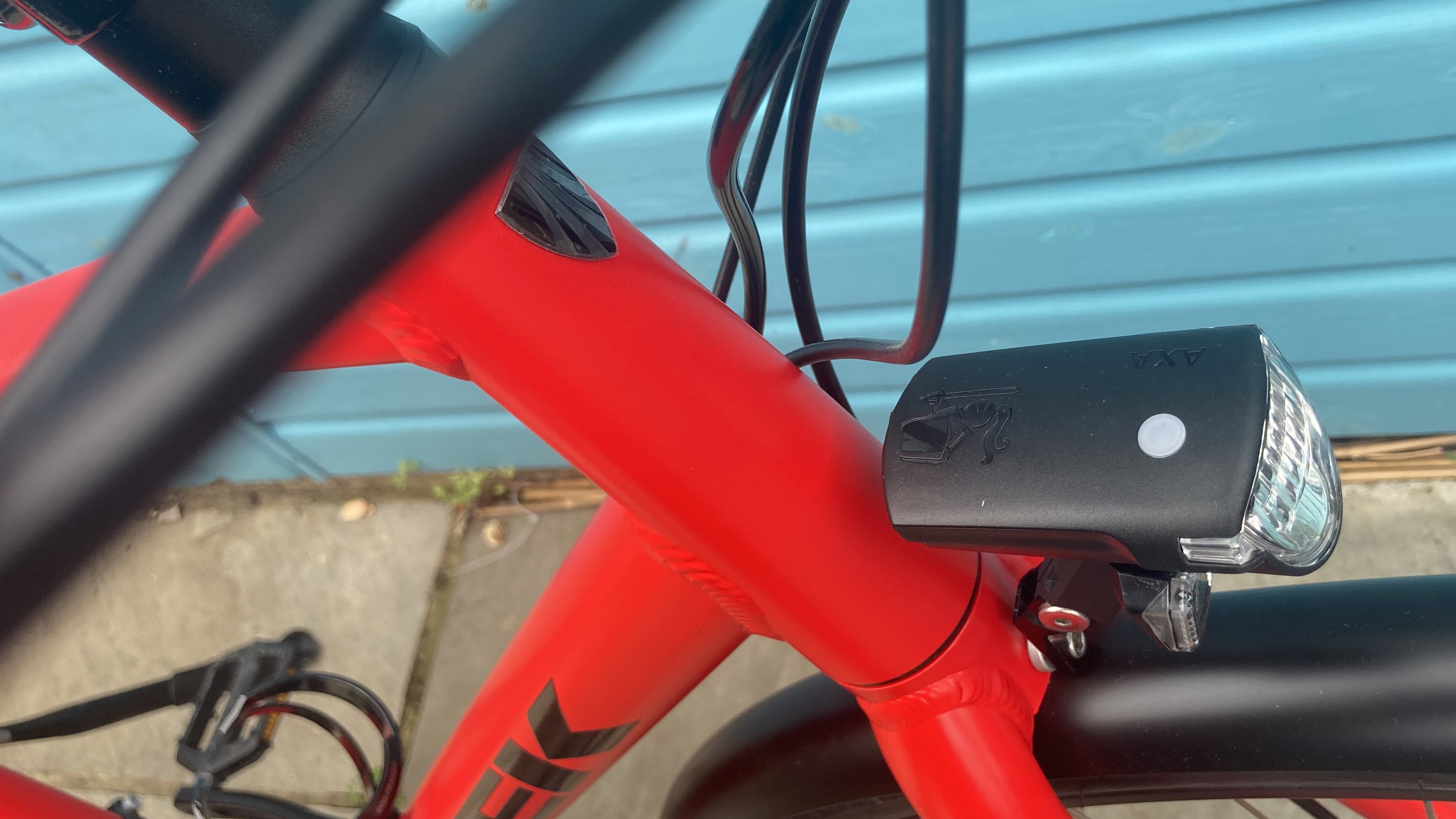
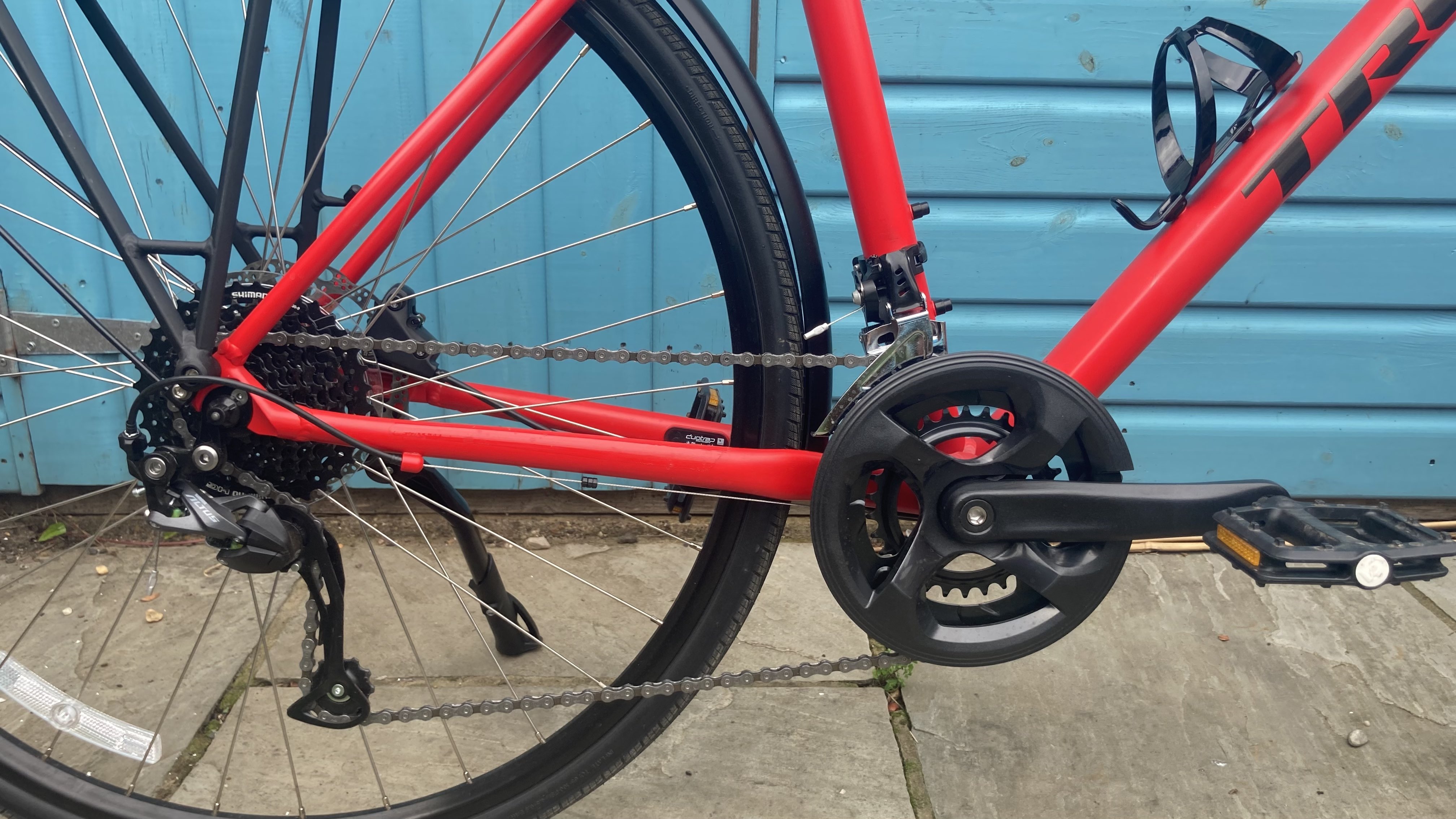
Design and specification
Recognising alloy frames' bad reputation for comfort compared to steel and carbon, Trek set itself a goal to "build more compliant frames that retain the acceleration and affordability that have always made aluminium popular" – and it is the fruit of that labour that the FX 2 Disc Equipped is designed around.
The Alpha Gold Aluminium frame, while not the lightest, does offer a great balance between responsiveness and comfort. It is also strong: according to Trek, the FX 2 Disc can take weights of up to 136kg (for bike, rider, and cargo combined), which fares well compared to other hybrid bikes in the same class such as the Merida Speeder 200 (120kg) and Scott Sub Cross 50 (128kg). The pannier rack that comes with it is also very solid and suitable for carrying loads up to 25kg despite weighing less than 600g itself.
My size large test bike as a whole weighed in at 13.4kg with pedals. The rack, lights, mudguards, and kickstand account for just over a kilogram of that weight but it's still a touch on the heavy side for a fixed-frame hybrid in this price range.
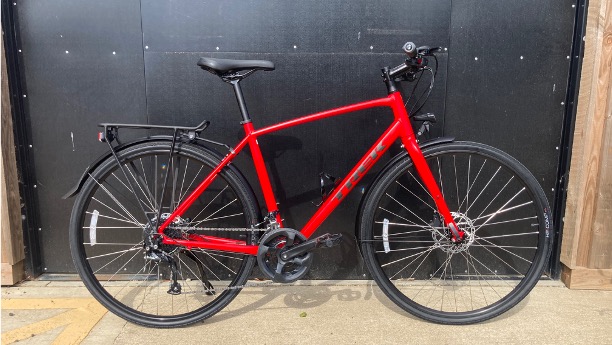
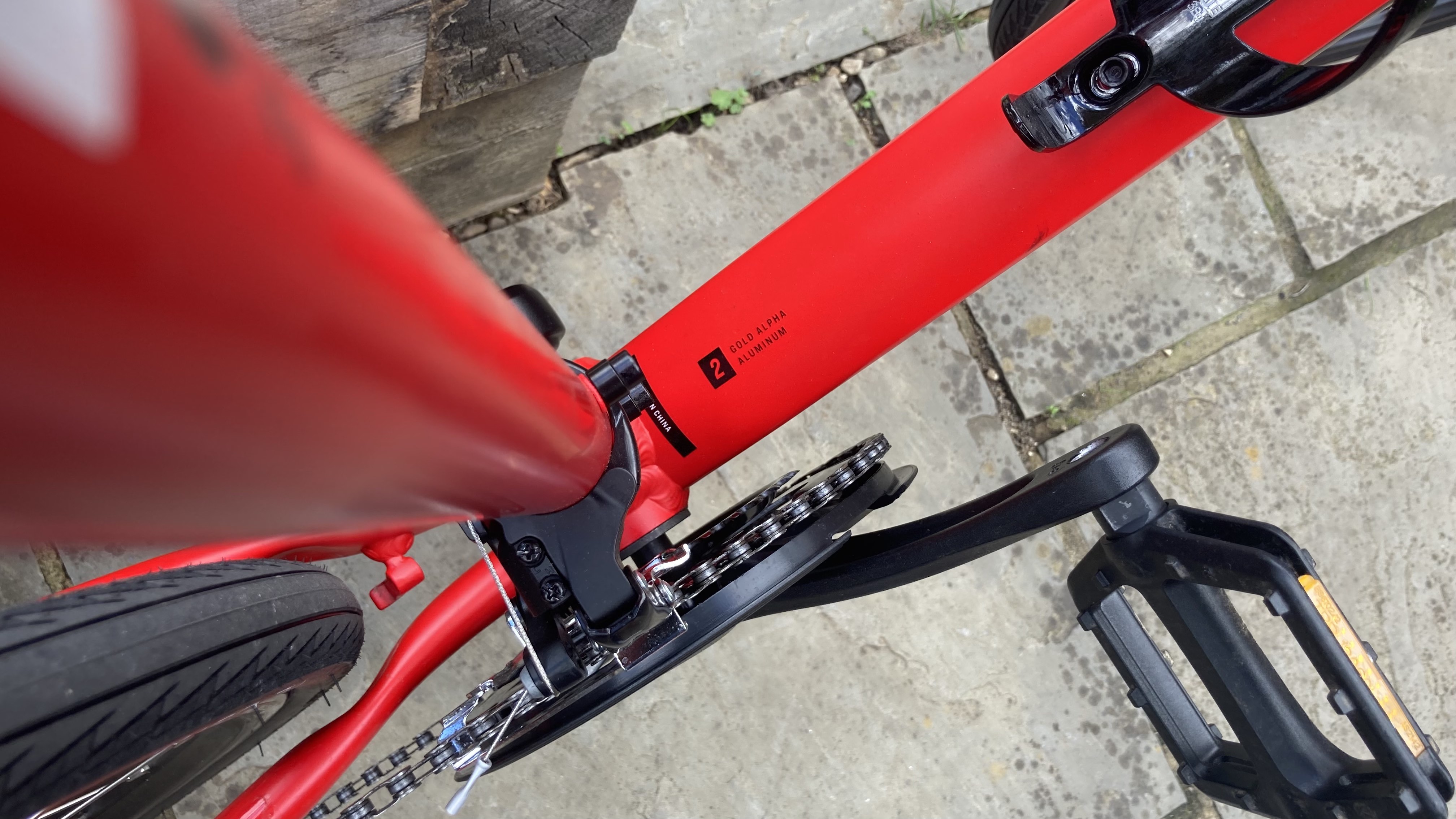
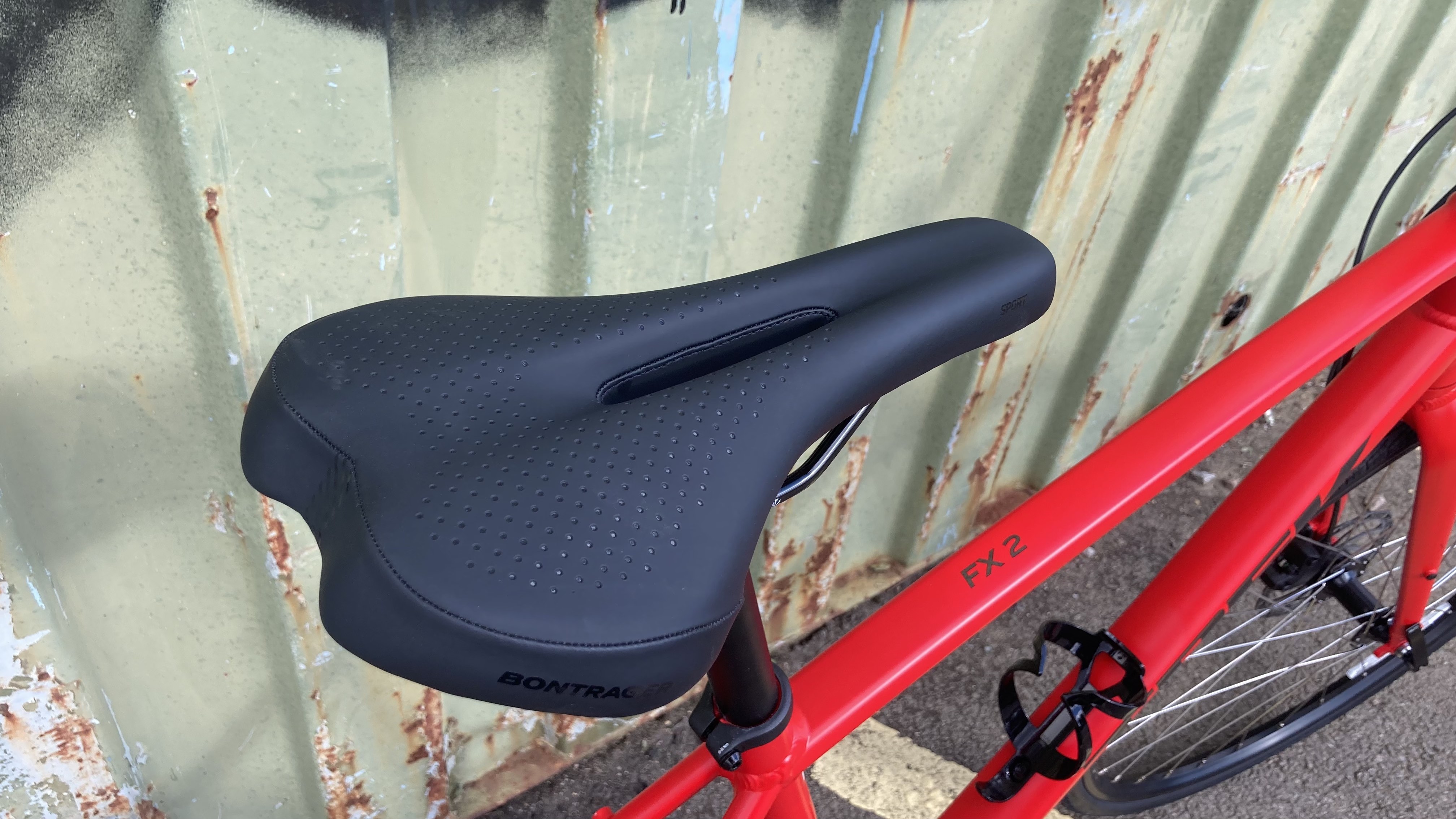
While the focus is on the practicality of the frame, it is by no means ugly – especially when stripped of all the accessories – with internal cable routing, a gentle curve to the top tube that is reminiscent of the Specialized Sirrus (one of the classic beauties of the hybrid world) and the choice of a striking Viper Red or classy Lithium grey colourway. The geometry is pretty much what you would expect from a hybrid, with perhaps a slightly longer chainstay length adding to its stability. It is not as upright as, say, the Sirrus but similar to the Cannondale Quick 3 – which is a good bike to use as a comparison in general.
Like the Quick 3, the Trek FX 2 comes with a Shimano Acera/Altus 2x9 drivetrain and has an integrated mounting system in the stem, as well as the ability to track cadence and other metrics using an integrated wireless sensor.
Trek's Blendr stem system is designed for easy installation of computers, lights and other accessories to your cockpit. It does, rather annoyingly, require an additional base to be purchased (which plugs into the stem) and then a further mount for the specific accessory (which attaches to the base) but that does allow for a wide range of options to suit all needs.
The DuoTrap S is a Bluetooth/ANT+ sensor that integrates into the chainstay and wirelessly transmits to a smartphone or computer to track cadence and other metrics. Again, it requires a separate purchase, but the frame is set up for it to be attached without the need for zip wires or other ungainly fasteners.
Trek has made an effort to include ergonomic grips on the FX 2 Disc Equipped, although they are a little on the basic side, especially compared to those on the more expensive models in the FX range.
The lights, however, are far more impressive, particularly the AXA Greenline 35 headlight. USB-charging, it has a wide beam, is also designed to be visible from the side and is discreetly mounted on the top of the fork, which avoids cluttering the cockpit.
The Tektro HD-R280 hydraulic disc brakes are pretty standard now for mid-range hybrids. My test bike came with Bontrager H2 Comp 700x32c tyres but with the mudguards fitted there is room for up to 35mm and Bontrager H2 Hard-Case Light 700x35c tyres are listed as an option on the spec sheet. Without the mudguards, Trek says the frame can accommodate tyres up to 38mm in width.
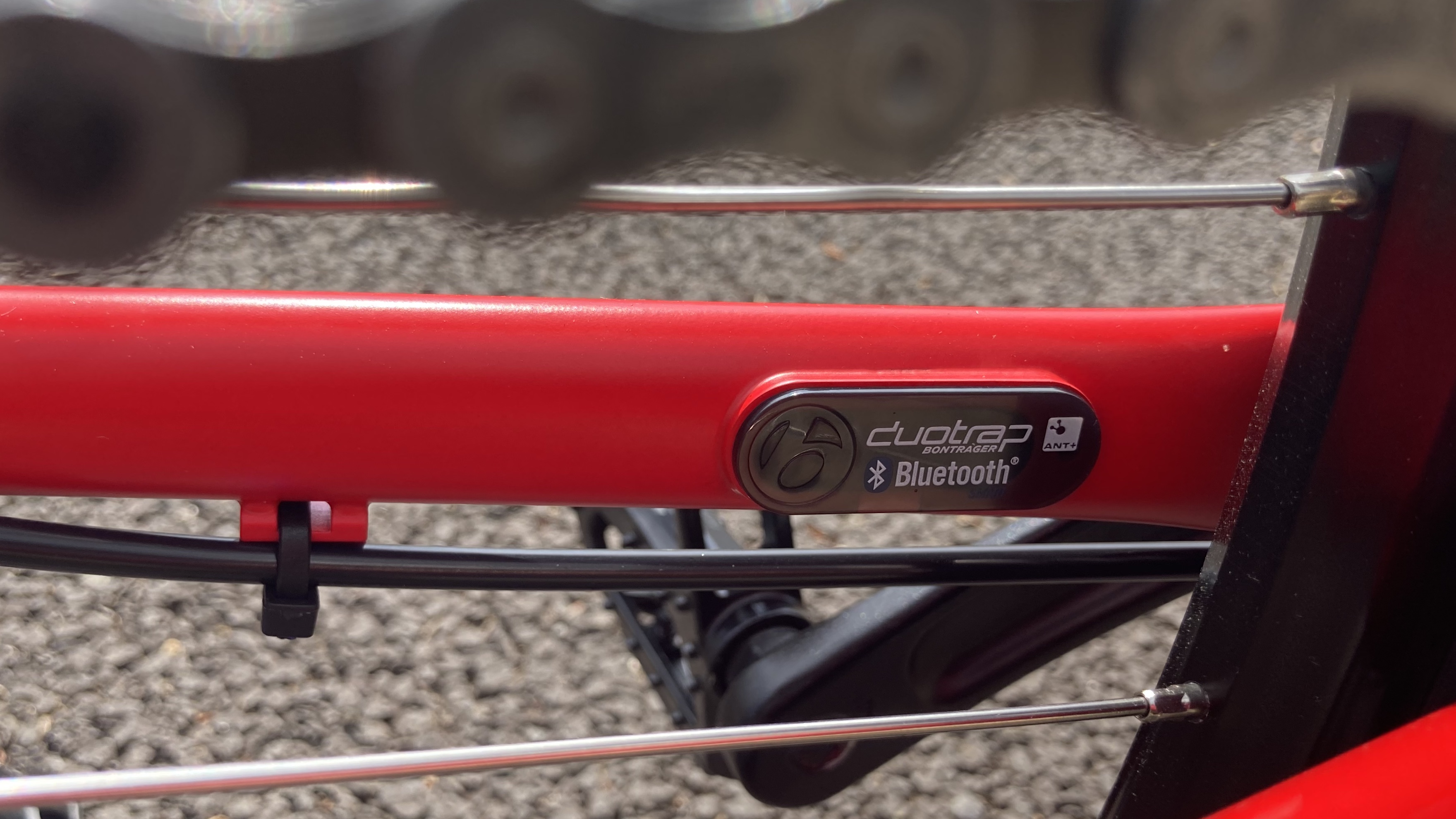
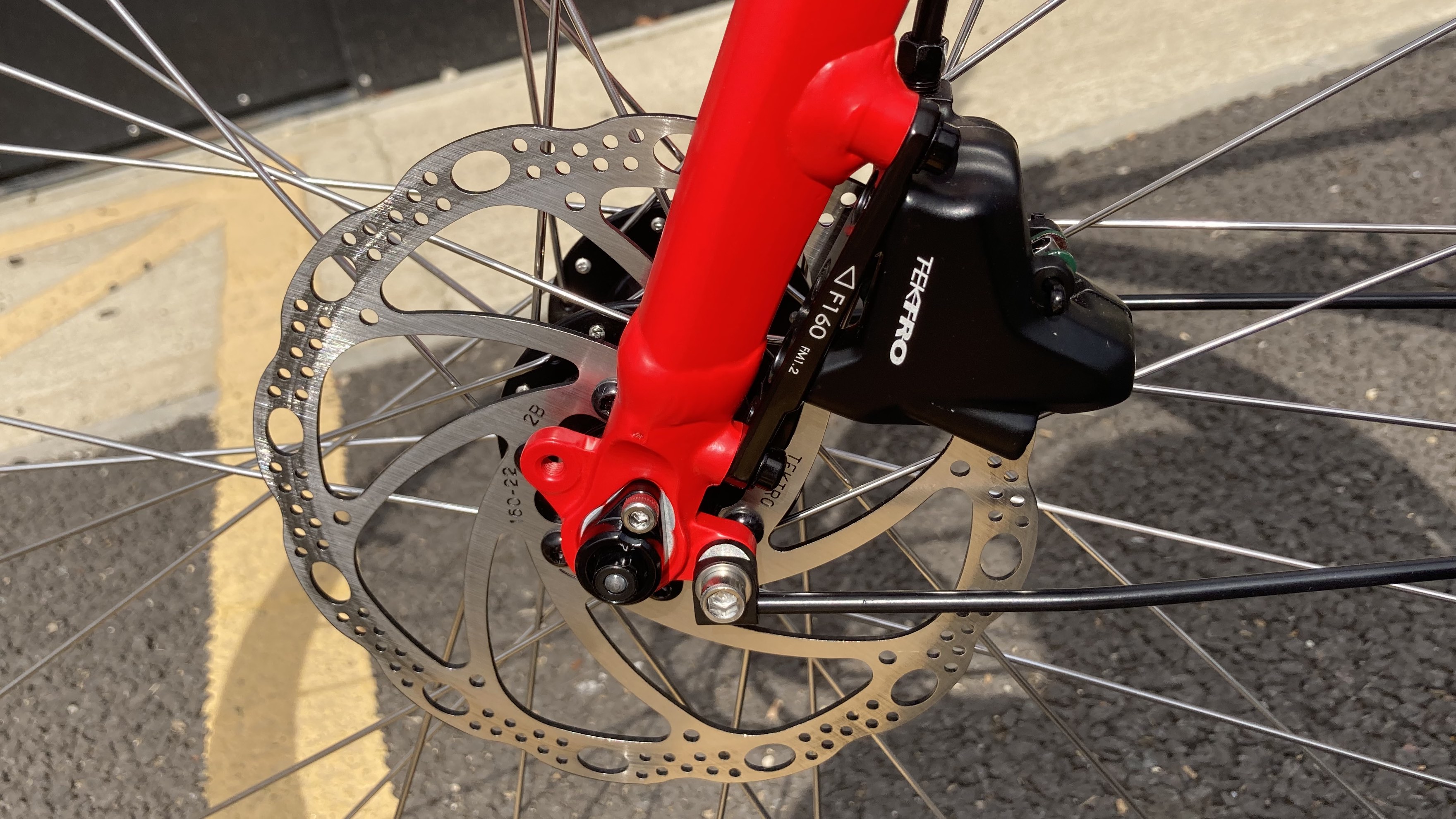
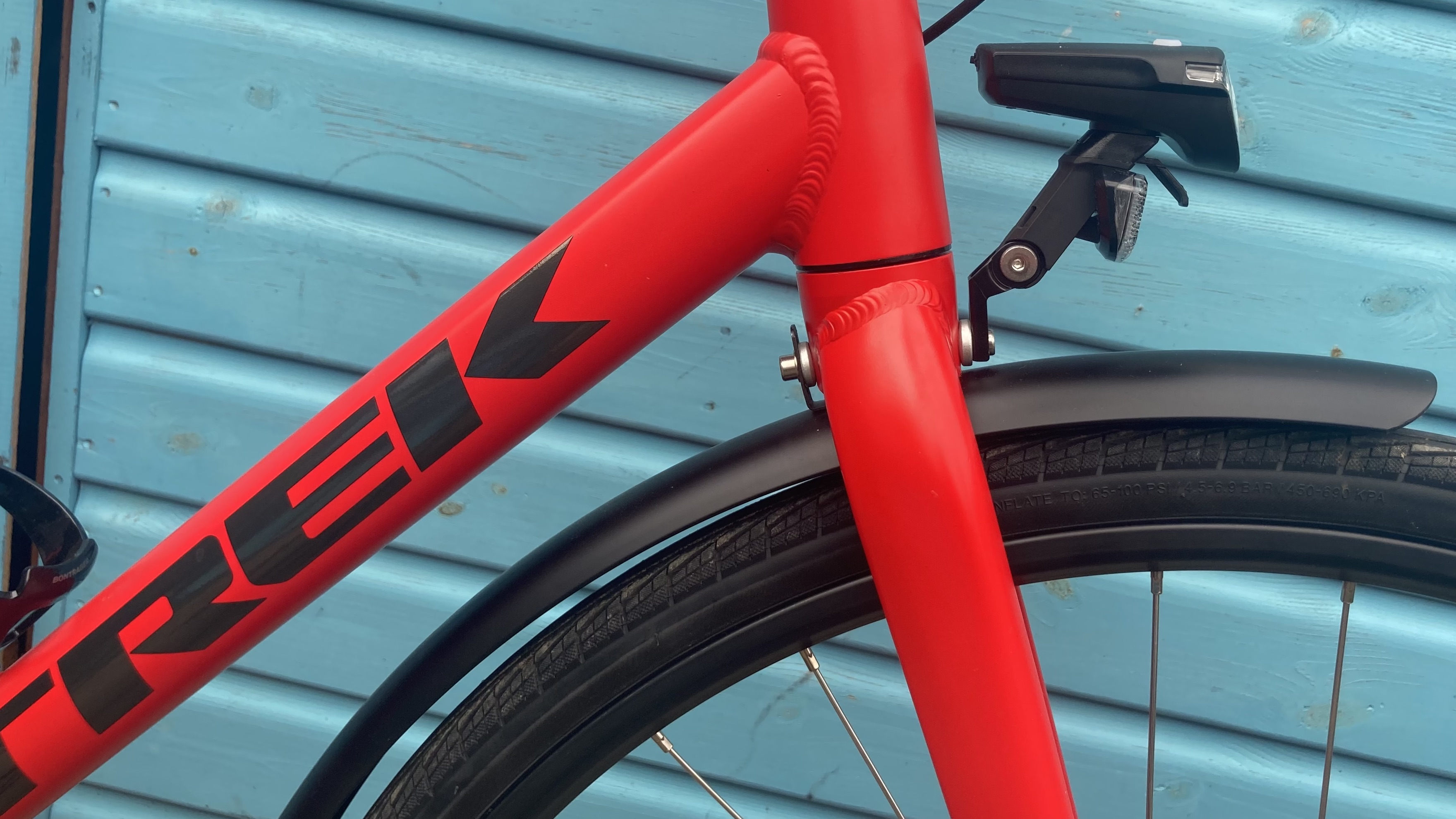
Performance
Trek deserves credit here for really delivering on its aim of a responsive-yet-compliant frame. It's one thing coming up with the jargon, but another bringing it to fruition at a genuinely affordable price. While the FX 2 Disc Equipped might come across as a bit of a plodder on paper, in reality, it has a surprising amount of responsiveness. Loaded up with a carry pack on top of the pannier rack, I was happy overtaking other cyclists on reasonably fast country roads, knowing I had the acceleration to get past and back across to the side of the road in ample time.
Yes, it's no speed demon – it doesn't have the playfulness of the Boardman URB 8.9 or the lightweight climbing ability of the Merida Speeder 200, two bikes at a similar price point – but where it completely outscores both is in comfort and stability, even with a rack, mudguards, light, kickstand all bolted on.
Interestingly enough, I took it for a ride with all those added extras stripped off and, while significantly lighter – making an obvious difference on climbs – there was not a huge noticeable change in its performance on the flat.
My test bike came with a slightly-different-to-advertised Microshift Marvo front derailleur instead of Acera T3000, which is roughly equivalent, and I had no issues with it. However, as a whole, I did find the drivetrain to be under-par for a fitness bike. It's perfectly functional and will get you pretty much wherever you need to go, but it is a little clunky and I noted that the next bike up in the FX range, the FX 3 Disc Equipped, comes with a 10-speed Shimano Deore groupset which, in my experience, is a huge step up in performance.
In particular, I could not get to grips with the drastic change when switching chainrings on the 46/30 chainset. If I didn't downshift on the 4th sprocket or earlier I found myself spinning out – and this is perhaps a rare example of the FX 2 Disc Equipped coming a little unstuck wanting to satisfy in all areas. That 16-tooth difference in the chainrings (the same difference as a 50/34 compact road chainset, for example) means the bike has the range to get up steep hills while also having enough gas on the flats, but the user experience is compromised a little in doing so.
Where it doesn't compromise, however, is in its comfort and handling, whether I took it on potholed roads, bike paths, or light gravel it felt so balanced and stable. I was even happy taking it on the grassy, rutted track of a nearby nature reserve – and this was all with the standard 32 mm tyres it came with. Even when there was a little rattling, you could tell it was coming from the rack, fenders, and lights rather than the frame.
Taking it out at night in light rain did little to change my faith in its dependability and the lights were superb, particularly the wide-beam fork-mounted headlamp – a marked improvement from the usual glorified-torch-on-the-handlebars setup I usually use. Neither front nor rear light offered an intermittent option but, having been driven to distraction on long night rides behind blinking bulbs in the past, that was no great loss to me.
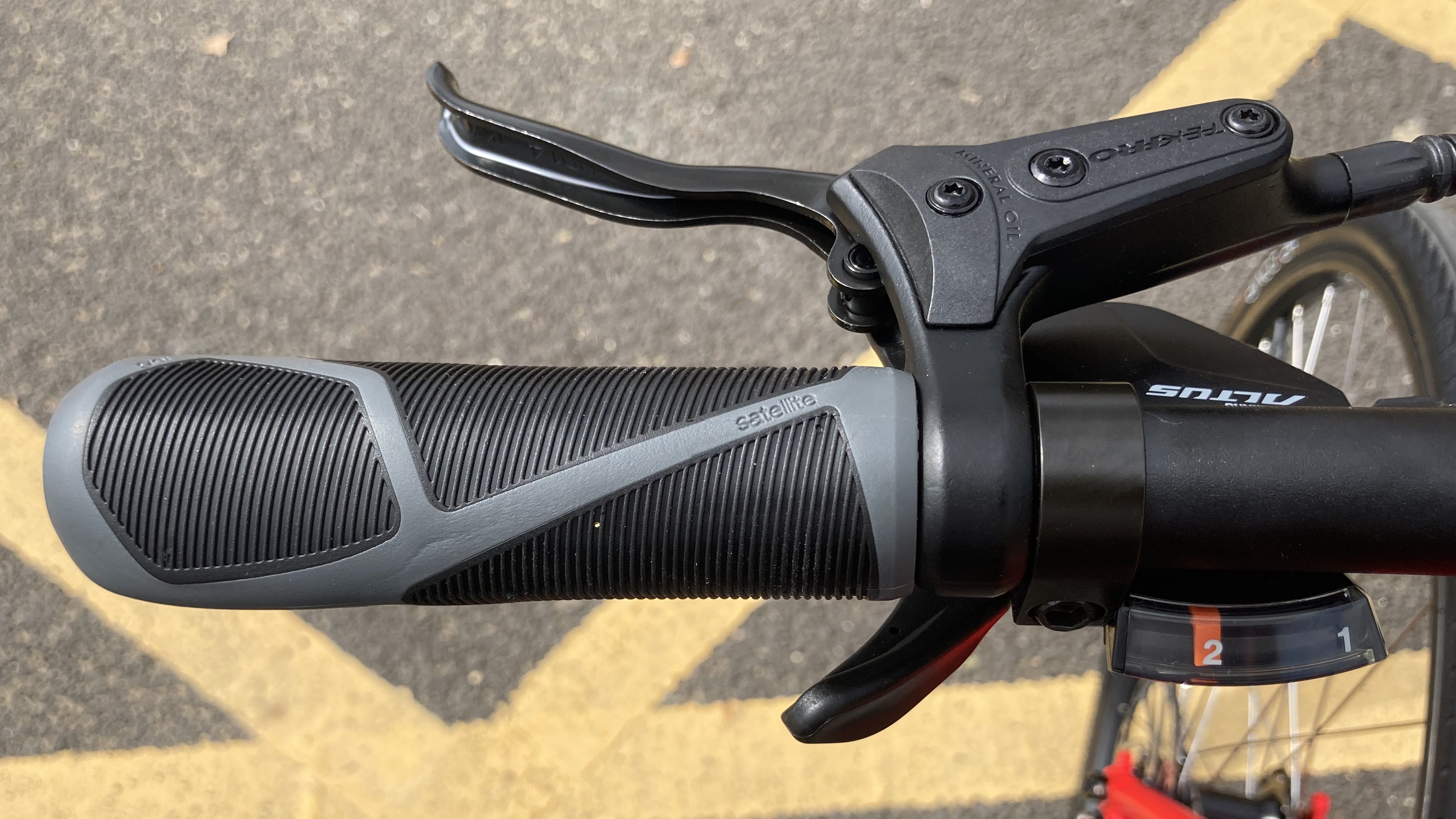
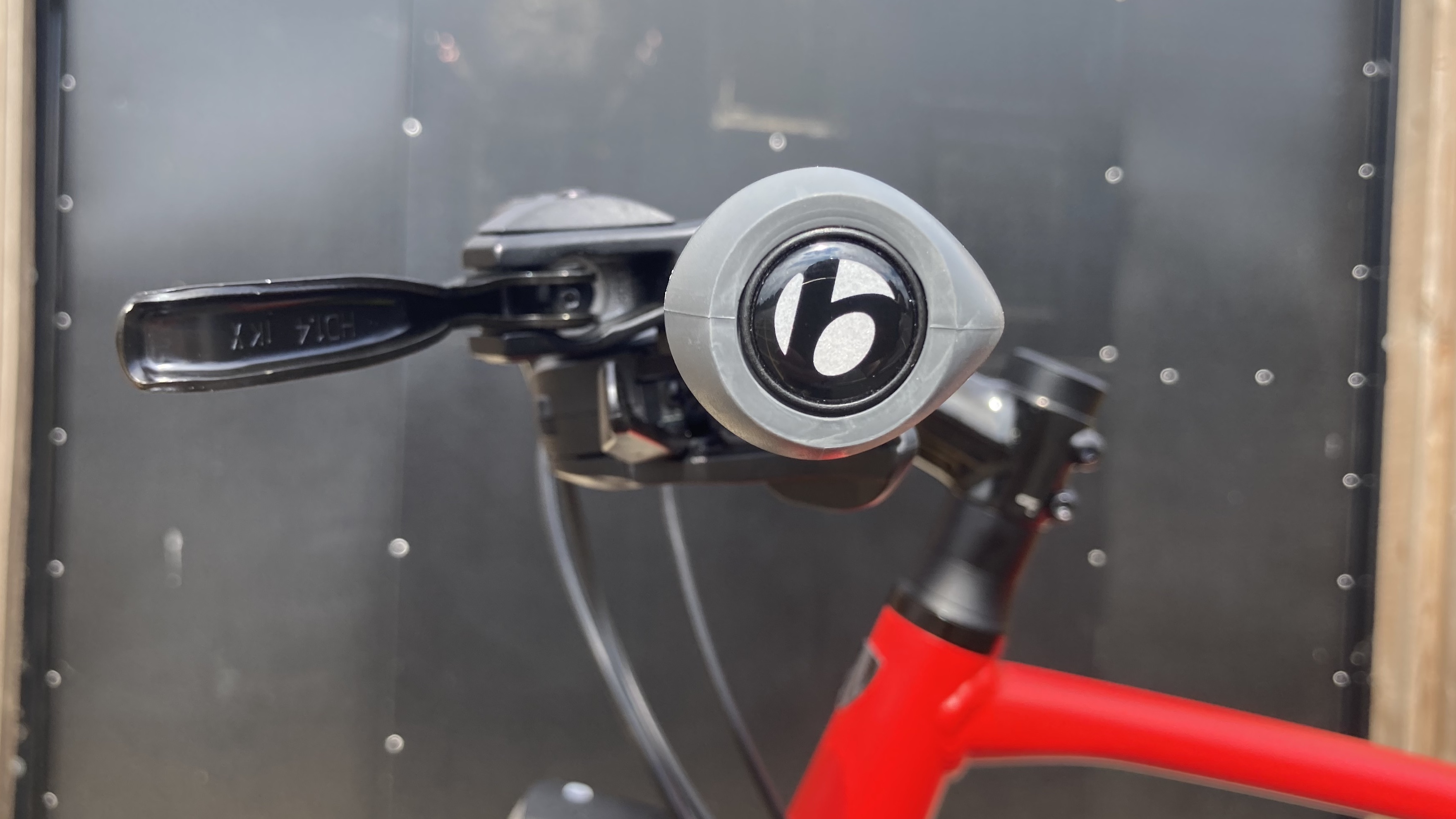
Verdict
I took the Trek FX 2 Disc Equipped on rides around the countryside, trips to the shops, rides with the kids, rides at night, in the rain, for exercise, for errands and more, and on every occasion, it delivered. It is solid and dependable without feeling clunky or cumbersome. It's not sexy but it's not ugly. It's not overly fun but it's no chore to ride.
It will do what it needs to do in almost every situation you will need a hybrid bike for. Not necessarily to the highest level, but to a high enough level that you won't feel like you are missing out.
Yes, I did find the Altus/Acera groupset to be restrictive in terms of performance but drivetrains can be upgraded, along with wheels and grips and seatposts etc. Having a top frame is such a great building block. I would stress, however, this frame still has a ceiling to what it can do as a fitness bike, even if it were upgraded in all those areas. It is built for sturdiness as much as anything else and the fact that its performance was similar with and without the rack, fenders, kickstand et al is quite telling. I'm not going to use it to take on the Brecon Beacons in the Dragon Ride but I might choose it over a more expensive performance-oriented bike for a long-distance overnight ride such as the Dunwich Dynamo, where comfort, stability and safety are the overriding priorities.
| Attributes | Notes | Rating |
|---|---|---|
| Design and aesthetics | Solid and unspectacular sounds unkind but it's arguably exactly what you want from this type of bike | 8/10 |
| Components | Drivetrain is a little pedestrian for a bike that falls into 'fitness' category – but still enough to get you anywhere you want to go | 7/10 |
| Performance, handling and geometry | Frame hits the sweet spot between comfort and responsiveness, and handling and stability are also spot on | 9/10 |
| Weight | Heavier than average – although more reasonable with all the trimmings stripped off | 7/10 |
| Value for money | Considering the versatility of the bike – and the extras of rack, fenders, kickstand and lights – excellent | 9/10 |
| Overall rating | Row 5 - Cell 1 | 80% |
Tech specs: Trek FX 2 Disc Equipped
- Price Trek FX2 Disc Equipped: £740.00 / $N/A
- Price Trek FX2 Disc: £650.00 / $799.99
- Sizes: S, M, L, XL
- Weight: 13.4kg (actual, size L, with pedals)
- Frame: Alpha Gold Aluminium
- Fork: FX Alloy
- Shifters: Shimano Altus M2010, 9-speed
- Front derailleur: Microshift Marvo
- Rear derailleur: Shimano Altus M2000
- Crankset: 46/30
- Cassette: Shimano HG200, 11-36, 9-speed
- Brakes: Tektro HD-R280 hydraulic disc
- Wheels: Bontrager Connection
- Tyres: Bontrager H2 Comp, 700x32c
- Saddle: Bontrager Sport
- Seatpost: Bontrager Alloy, 12mm offset
- Stem: Bontrager Comp, Blendr Compatible, 7-degree, 90mm length
- Handlebars: Bontrager alloy, 31.8mm, 15mm rise
- Extras: Rack, Eurofender Snello mudguards, Spanninga SOLO rear light and AXA Greenline 35 headlight, Bontrager Satellite grips, kickstand
Ben has been a sports journalist for 16 years, covering everything from park football to the Olympic Games. As well as cycling, his passions include podcasts, tennis and speaking enough Italian to get by on his snowboarding trips to the Dolomites. A DIY rider who is almost as happy in the toolbox as he is in the saddle, he is still trying to emulate the feelings he experienced as a nine-year-old on his first Peugeot racer – he couldn’t fathom the down-tube friction shifters then and he’s still wrestling with groupsets now. When he isn’t making a beeline for the nearest Chiltern hill, he is probably tinkering or teaching his kids how to clean a bike properly. He rides a heavily modified 1980 Peugeot PVN10 Super Competition (steel is real) when the road is smooth and dry, and a BMC Alpenchallenge when it’s not.
